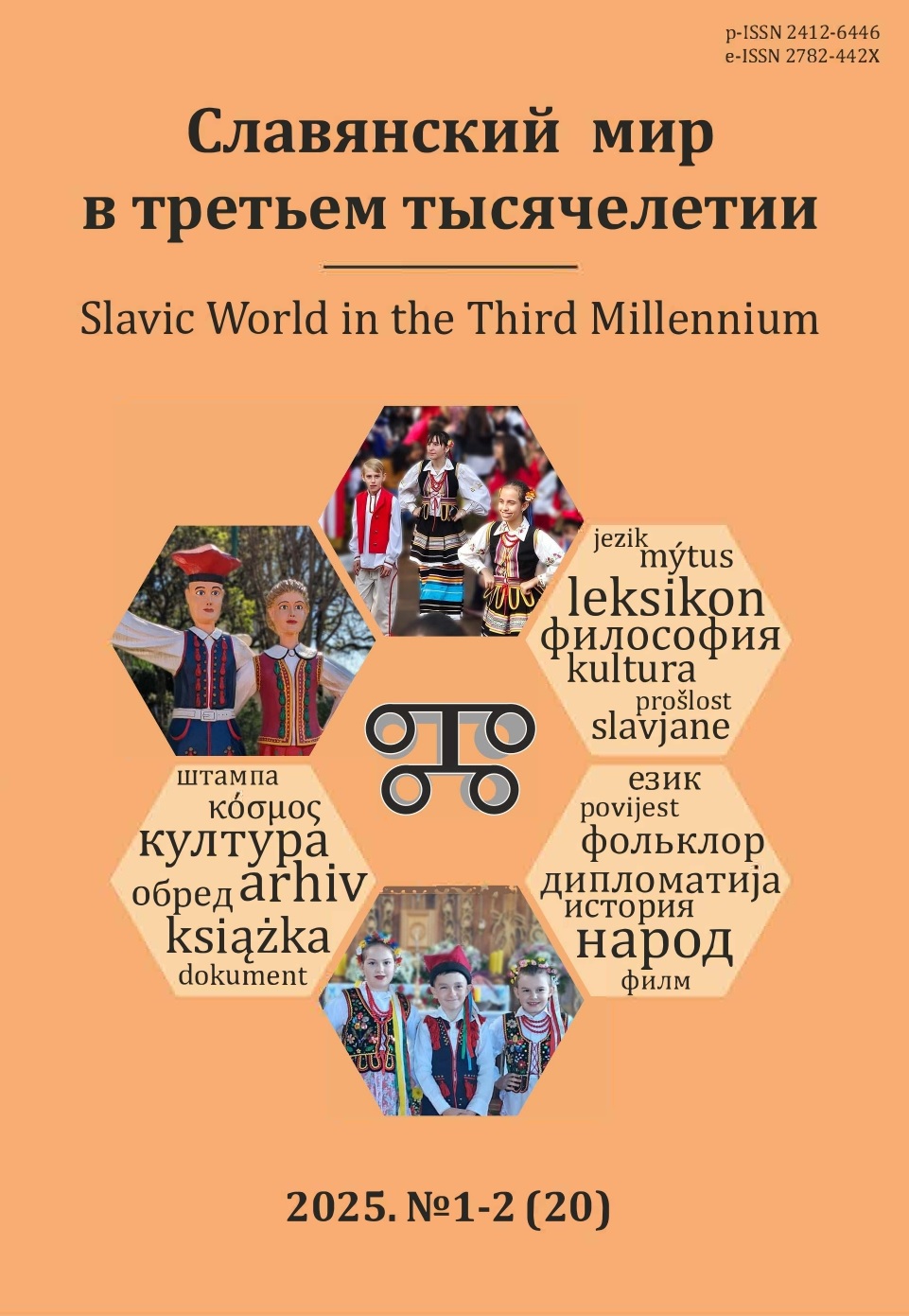On Reconstruction of an Extra-Text Curse Situation (Based on the Materials of Kostroma Cultural and Linguistic Tradition)
DOI:
https://doi.org/10.31168/2412-6446.2025.20.1-2.07Keywords:
Curse, ethnolinguistics, Kostroma region, Russian dialects, mythological texts, field materialsAbstract
The article is concerned with the study of an extra-text curse situation arranging the corresponding speech acts. The article is based on mythological texts recorded by the Toponymical expedition of the Ural University in the Kostroma region from 1975 to 2024. The article examines the components of the curse situation repeatedly appearing in the stories of dialect speakers: 1) curse effect; 2) subject; 3) object; 4) tools; 5) time; 6) place; 7) curse consequences; 8) counter measures against the curse. Metalinguistic markers of a curse, for example verbs naming evil speech, such as klyast’, poklyast’, namolit’, proklinut’, etc. nouns and adjectives naming the curse object, such as klyatysh, proklinysh, proklinutyy, prokliknutyy, poklyannyy, etc. have been analyzed. Extralinguistic roles of the evil speaking situation, such as parents (especially mother), spouses (especially wife), keeper towards his/her livestock as a curse addresser have been described. The article also represents the main tropes organizing the texts about curses: for example, if we talk about the curse consequences, the key tropes are the disappearance of the cursed one in the forest, the abduction of the cursed one by evil spirits, illness (usually a mental one) of the cursed one, etc. Special attention is paid to the elements of the curse situation that have not yet been studied in much detail. Thus, the curse tool is described in detail; in the Kostroma tradition it is a stake (wedge), which, on the one hand is used in the magical practices of cursing and casting bad spells, when a stake is hammered into the courtyard of the person to be cursed, and on the other hand having apotropaic use in a wide range of situations of protection against evil spirits and curses. Some linguistic and geographical conclusions are made about the prevalence of certain tropes in different areas; the prospects for studying the extra-textual curse situation based on the materials of other local cultural and linguistic traditions are indicated.
The work authored by Ya. V. Malkova was prepared as a part of the project supported by the Russian Science Foundation (grant number 23-78-10029, https://rscf.ru/en/project/23-78-10029/).
Received 5 March 2025
Revised 27 Μay 2025
Accepted 5 June 2025
For citation: Berezovich, E. L., Malkova, Ya. V., 2025. On Reconstruction of an Extra-Text Curse Situation (Based on the Materials of Kostroma Cultural and Linguistic Tradition). Slavic World in the Third Millennium, 20 (1–2), pp. 123–144. https://doi.org/10.31168/2412-6446.2025.20.1-2.07



